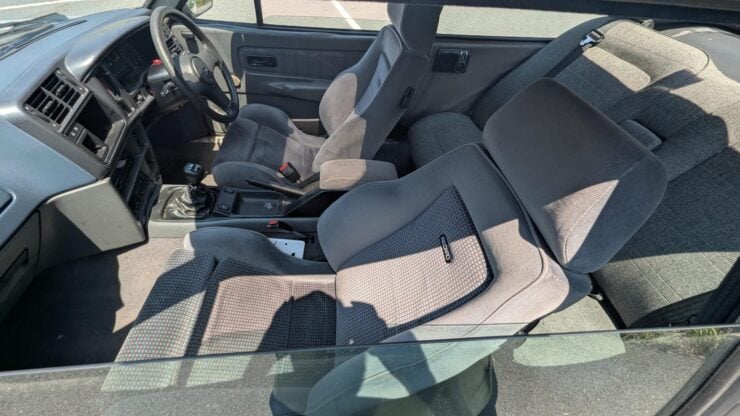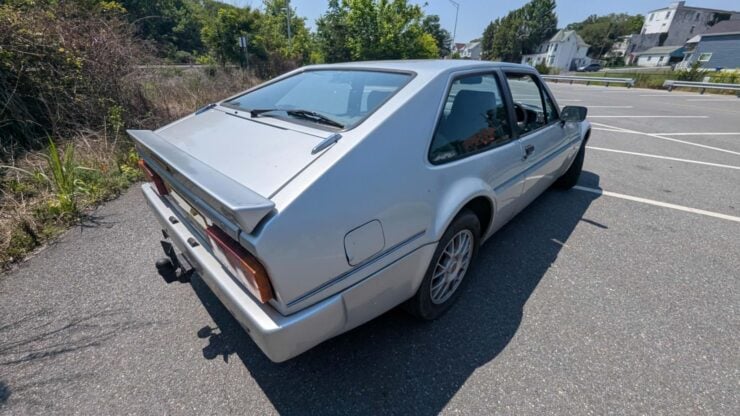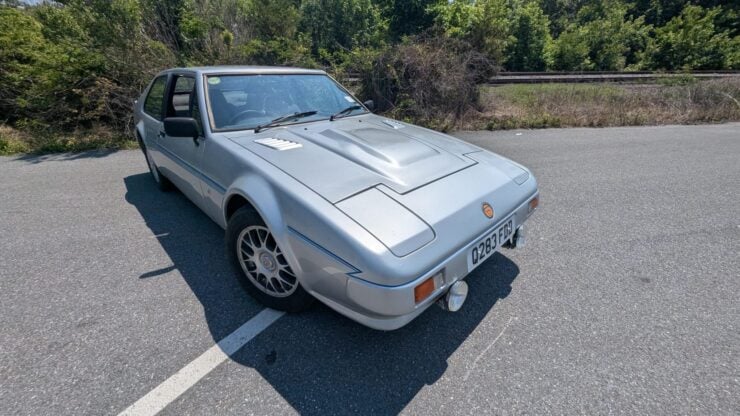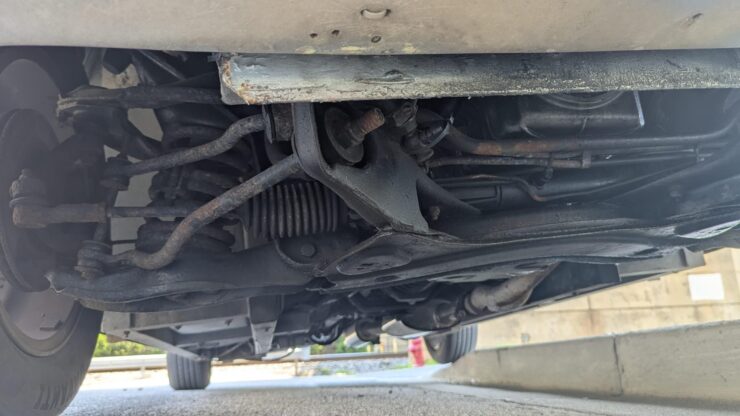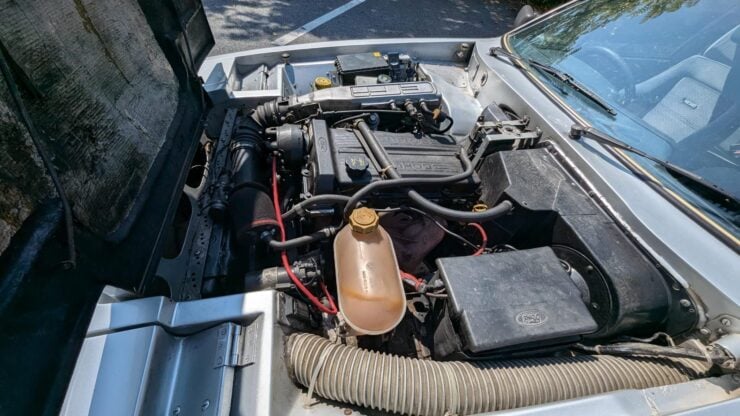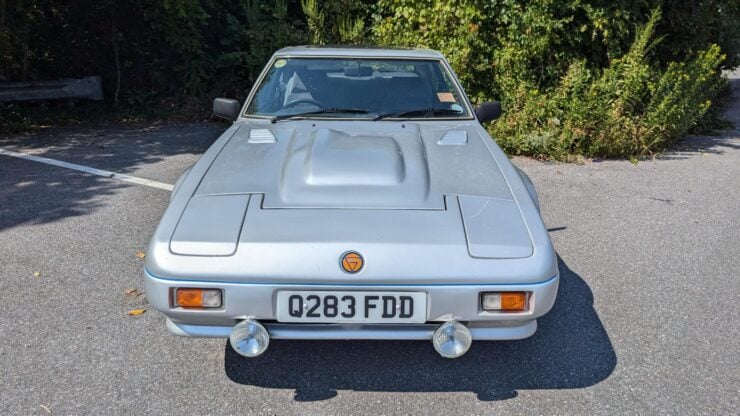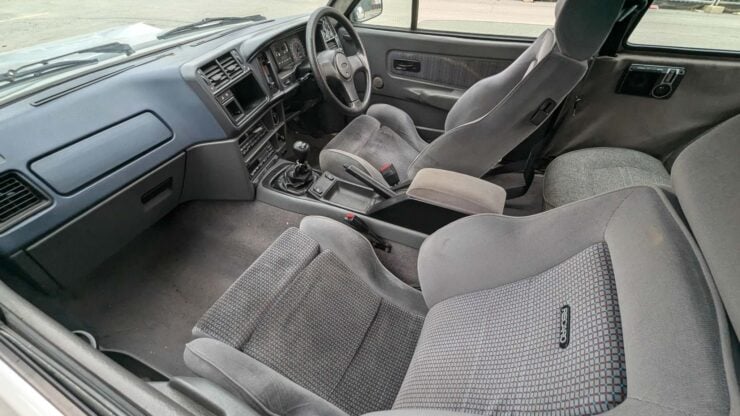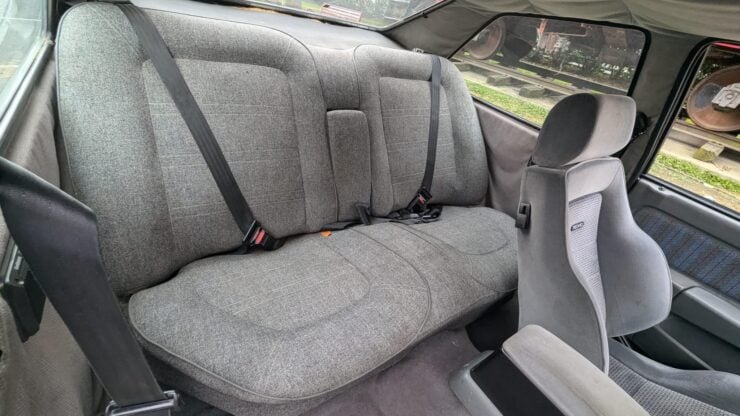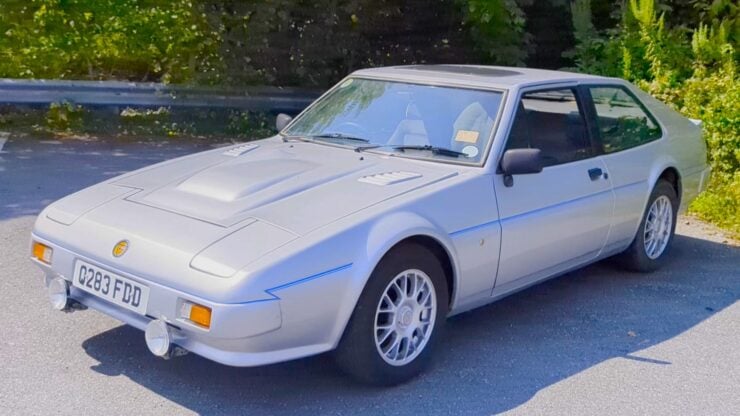The Ginetta G26 was developed by the British automaker in the 1980s as one of the most practical kit cars of its age – a rear-wheel drive wedge with seating for four, ample trunk space, and a stiff tubular steel chassis.
The practicality of the G26 would see it become one of Ginetta’s most successful cars of the 1980s, with close to 300 sold both as complete cars and in kit form. Today the model seems largely forgotten, with the exception of the small but dedicated Ginetta enthusiast community of course.
Fast Facts: The Ginetta G26
- The Ginetta G26, introduced in 1984, was a wedge-shaped 2+2 coupe designed for practicality over raw performance. Built on a tubular steel spaceframe with Ford Cortina mechanicals, it offered ample trunk space, daily drivability, and good handling. Approximately 300 or so were sold, making it Ginetta’s best-selling 1980s model.
- Designed for home assembly, most G26 builds used the 2.0 liter Ford Pinto engine, though some were fitted with different engines, based on builder preferences. Its lightweight fiberglass body and well-sorted suspension gave it sharp road manners. Features like wind-up windows and good weather sealing made it unusually livable for a kit car.
- Ginetta developed several models from the same platform: the G28 with a shorter wheelbase, the G30 as a four-door saloon, and the G31 with revised proportions. The G26 remained the standout due to its balance of usability, looks, and performance.
- The featured 1987 G26 was imported to the US in 2024 and is now for sale in Maryland. It’s a rare car on American roads, likely one of very few stateside. Though not showroom-perfect, it represents a distinctive project opportunity and a conversation-starter at car meets.
History Speedrun: Ginetta Cars
Ginetta Cars was founded in 1958 by four brothers, Bob, Ivor, Trevers, and Douglas Walklett, in Woodbridge, England. Each brother brought different strengths to the table: Bob handled business operations and would become the company’s managing director. Ivor was the chief designer, responsible for styling and overall vehicle layout. Trevers specialized in bodywork and mould-making. Douglas, the mechanical engineer of the group, developed chassis, suspension, and electrical systems.
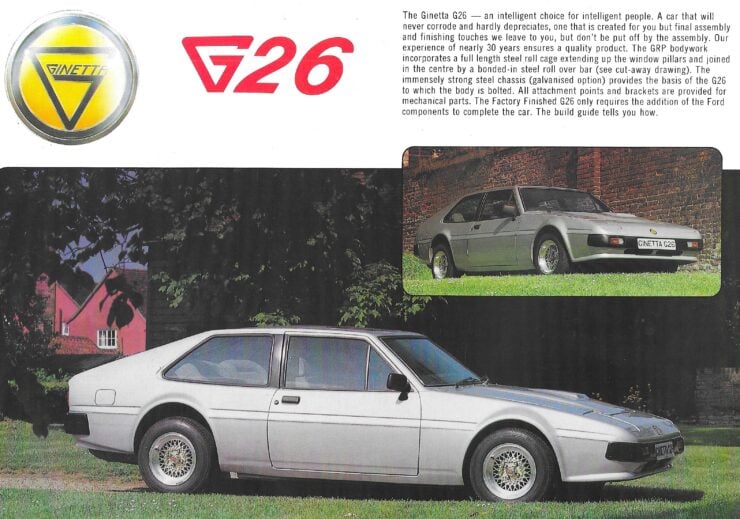

Their first car, the Ginetta G1, was a one-off special based on a Wolseley Hornet. It served as a proof of concept and was never sold to the public. The G2, introduced in 1959, became Ginetta’s first production car.
Offered in kit form, it had a tubular steel chassis and Ford mechanicals and was aimed squarely at club racers. Approximately 100 units were produced, helping Ginetta gain early traction in Britain’s grassroots motorsport scene and compete with companies like Lotus and TVR.
The company later gained momentum with the Ginetta G4, introduced in 1961. With its lightweight fiberglass body and tubular spaceframe chassis, the G4 was light, quick, and highly competitive – most were powered by Ford four-cylinder engines.
The G4 became Ginetta’s breakthrough model, successful both on the road and in club-level racing. It was followed by the G10 and G11, attempts to break into the higher-performance market using Ford and MG power, but these struggled due to cost and complexity.
By the late 1960s, Ginetta had relocated to Witham, Essex, and introduced the G15, a rear-engined coupe using Hillman Imp running gear. This model sold well, around 800 units or so, and was offered both as a kit and as a fully-assembled, turnkey car.
It was one of Ginetta’s most commercially successful cars, especially considering the constraints of British kit car regulations at the time.
The 1970s and early 1980s saw continued development and experimentation with models like the G21, a more refined coupe aimed at buyers wanting road-based performance and everyday practicality. As the market shifted and competition increased, Ginetta struggled to maintain sales volume – by the 1980s, production had slowed, and the company sold fewer and fewer kits.
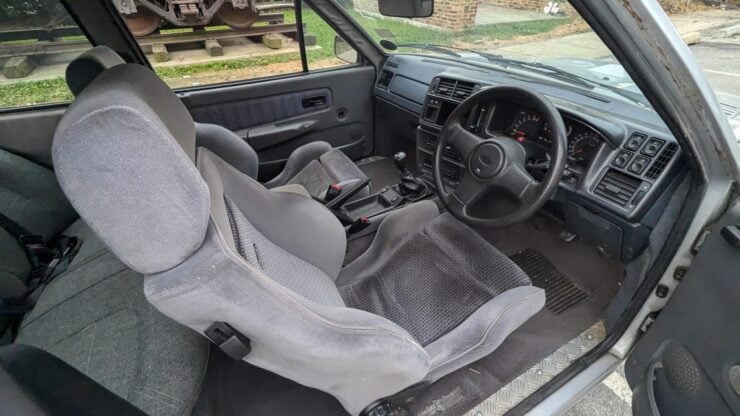


In 1989, the company was sold to a group of investors led by businessman Martin Phaff, and the new ownership moved operations to Scunthorpe. They launched the G32, a mid-engine coupe using Ford and Renault components, and the G33, a V8-powered roadster aimed at TVR buyers. These were praised for their handling and performance, but production volume remained limited to say the least.
After another transitional period, Ginetta was acquired in 2005 by racing driver and businessman Lawrence Tomlinson through his LNT Group. Under his ownership, the company was revitalized with a renewed focus on motorsport.
Ginetta launched a series of successful race cars including the G50, G55, and G58, competing in GT and prototype classes. The firm also expanded into racing series ownership, running single-make championships like the Ginetta Junior Championship, designed to develop young talent.
Ginetta now operates from a modern facility in Garforth, West Yorkshire, producing both road-legal sports cars and full-fledged race machines. It remains one of the few British car manufacturers still independently building both chassis and bodies in-house, with a continuous presence in motorsport for over six decades.
The Ginetta G26
Introduced in 1984, the Ginetta G26 was a major shift toward practicality and perhaps even mass-market appeal. Unlike earlier models aimed at club racers and out-and-out sports car fanatics, the G26 was designed as a daily drivable, road-oriented sports coupe.
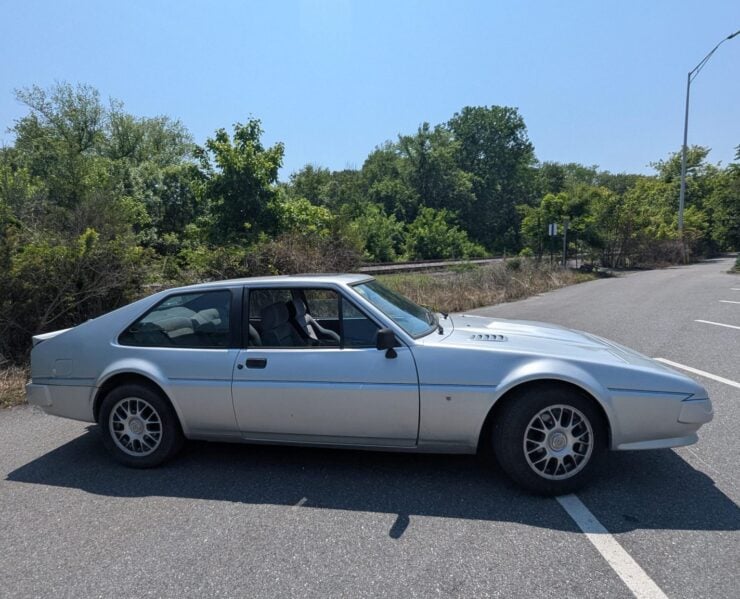


It had a sharp, wedge-like design with pop-up headlights, good visibility out of the cabin, and a large trunk. With a full steel spaceframe chassis and a fiberglass body, it kept Ginetta’s trademark lightness and good handling while offering a 2+2 layout with plenty of interior space.
The G26 was built around Ford Cortina Mk3/Mk4 mechanicals – most customer builds used the 2.0 liter Ford Pinto SOHC inline-four, though some used smaller engines or larger more powerful options depending on their own availability and budget. Suspension, brakes, and steering components were also Cortina-derived, which kept parts sourcing simple for home builders.
The car’s handling was often praised thanks to its light weight and well-designed chassis geometry. While performance varied based on the builder’s choices, a well-assembled G26 with a Pinto engine could manage respectable performance by the standards of the day – as good or better than the popular hot hatches of the 1980s.
Practical, sensible features like wind-up windows, functional weather seals, and its usable trunk made it suitable for regular road use, some even used them as their daily, which was uncommon for kit cars of the time. Come to think of it, it’s still uncommon for kit cars today.
Ginetta later offered closely related variants on the same chassis platform as the G26, including the G28 (shorter wheelbase), G30 (saloon), and G31 (coupe with revised proportions), that said, the G26 remained the most successful of the series. Roughly 280 examples were produced, making it one of Ginetta’s most successful offerings of the 1980s – proving the concept of a practical kit car.
The Ginetta G26 Shown Here
The car you see here is a 1987 Ginetta G26 that was imported into the United States in 2024. It appears to be in decent overall condition, however it should probably be approached as a project car as it does need some work here and there.
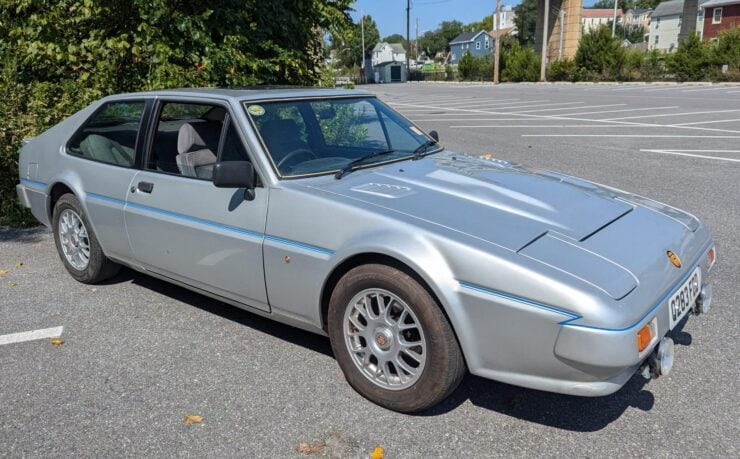


It’s not clear how many examples of the G26 have been imported into the USA, I’d lay a fair wager you could count them on one hand though, making this car quite a rare import that would be certain to gather a curious crowd at any Cars & Coffee event.
It’s now being offered for sale out of Brunswick, Maryland with a clean Maryland title in the seller’s name. If you’d like to read more about it or place a bid you can visit the listing here.
Images courtesy of Bring a Trailer


